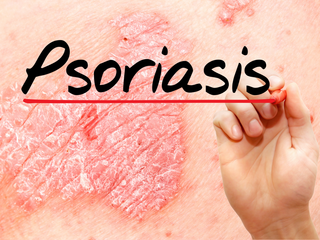Why Some See Long-Term Results With Psoriasis—and Some Don’t
During our customer support calls, we often hear two very different types of feedback.
Some say: “I’m fine now. My psoriasis is gone. I’ve stopped using the formulations.”
And others say: “My symptoms are back. Don’t you have something that will ensure long-term results?”
At first, we felt happier hearing that someone’s symptoms had vanished.
But over time, we realised — these are both simply stages in a psoriasis journey.
It led us to an important question:
Is there a treatment plan for psoriasis that gives lasting results?
Most people manage psoriasis episode by episode, treating flare-ups as they come.
But what if we shifted from managing flares to reshaping how our skin responds altogether?
Let's see what that looks like through the real-life stories of Meera and Raj.
Two People, Two Approaches
Meera and Raj both struggled with moderate to severe plaque psoriasis for 5–7 years.
They had red, scaly patches on their elbows, scalp, and legs. Both had used topical steroids, dermatologist-recommended creams, and coal tar shampoos.
But their approaches were very different.
Meera’s Story: Building Skin Resilience
Meera’s medications helped her during flare-ups — but the flares always came back.
She asked herself, "Am I just putting out fires, or can I ever truly change my skin?"
That's when she switched gears. She built a structured daily plan for psoriasis with three core components:
1. Daily Topical Care with Activated Oils™
Meera replaced her skincare products with cold-pressed and activated oils known for their barrier-repair and anti-inflammatory properties.
Research insight:
A study in the Journal of Clinical and Aesthetic Dermatology highlights that botanical oils rich in linoleic acid can reduce transepidermal water loss and calm inflammatory pathways, especially for conditions like psoriasis and eczema. (Source: PMC)
2. Diet & Lifestyle Adjustments
She made key dietary changes — reducing processed foods, dairy, and sugar, and focusing on anti-inflammatory meals.
Inspired by the Mediterranean diet, known for its rich antioxidants and omega-3 profile, she supported her body's healing from within.
3. Stress Management
Knowing how closely psoriasis is linked to stress, Meera added 15 minutes of deep breathing and light movement into her day.
Research insight:
A systematic review found that stress management techniques can reduce psoriasis flare-up severity and lower immune system overreactions in psoriasis. (Source: PMC)
Important:
Meera did not stop her dermatologist-prescribed medications. She simply stopped relying only on them—and actively started supporting her skin’s ecosystem.
Raj’s Story: The Reactive Approach
Raj did what most people do:
-
Applied steroid creams and formulations only during flare-ups.
-
Stopped all care once the symptoms improved.
-
Made no daily skincare, dietary, or lifestyle changes.
He viewed psoriasis as an external problem that needed treatment — not an internal condition that needed understanding.
Psoriasis Journey After Twelve Months
Meera’s skin was no longer inflamed all the time. She still had flare-ups, but they were fewer, milder, and shorter. Her skin was visibly calmer. She no longer felt the panic that used to come with every red patch.
She felt in control—not cured, but in control.
And Raj? His condition was largely unchanged. In fact, his dermatologist had to increase the dosage of his topical steroids. His scalp psoriasis flares ups were more frequent, and he was beginning to develop steroid resistance.
Why A Structured Psoriasis Routine Matters
It wasn't luck. It was structure, consistency, and a long-term plan focused on skin resilience—not just symptom suppression.
For a detailed, step-by-step guide to creating your own structured skincare and lifestyle plan, read our blog on building a long-term psoriasis management plan that actually works.
The Science Behind It
So what really happened to cause the difference between Meera and Raj’s results?
Psoriasis isn’t just a skin issue—it's an autoimmune condition where the immune system is overreacting, sending out too many inflammatory signals.
Topical steroids suppress those signals temporarily. But unless you’re also calming the immune system, reducing psoriasis triggers, and helping skin rebuild its defenses, the cycle just repeats.
That’s why Meera’s approach worked. She wasn’t just treating symptoms—she was:
-
Feeding her skin barrier daily
-
Interrupting chronic inflammation naturally
-
Re-training her immune response gently but consistently
Activated oils, mindful living, and consistent nourishment gave her skin the tools it needed to become stronger.
Meanwhile, Raj’s dependence on corticosteroids—without ongoing care—increased his risk of rebound flares and stronger steroid needs.
The Takeaway: You Deserve More Than Emergency Psoriasis Care
If you're dealing with psoriasis, you deserve a plan that’s not just about crisis control.
There’s no miracle cure. But there is a method.
If you’ve ever wondered whether psoriasis can truly go into remission, this article explores the deeper causes of psoriasis and the path to long-term relief.
If you’ve been living like Raj—treating flares as one-off events—it’s time to shift.
Build a rhythm. Nourish your skin daily. Support it, even when it "looks okay."
Because true healing happens in everyday moments, not just during flare-ups.
Ready to Build Your Psoriasis Routine?
If you’re ready to support your skin with Activated Oils™ and daily skincare routine for psoriasis that work with your body—not against it—start today. → Explore Psoriasis Care Solutions
Your skin will thank you 12 months from now.


